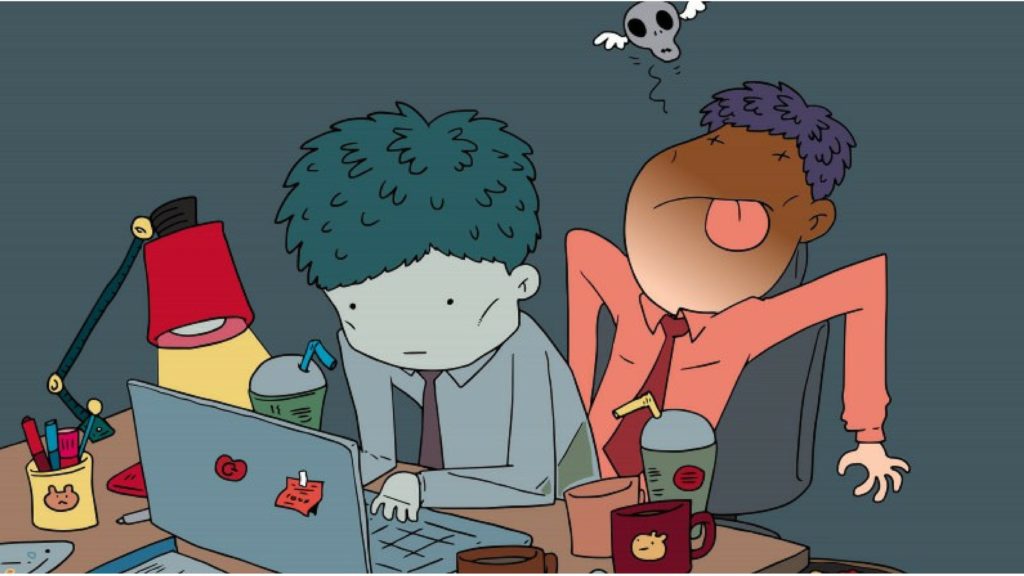Managing Conflict in School Leadership Teams

“Ross, I need to bring to your attention an incident and show you the following statement which has been provided to me by a parent”.
Have you ever found yourself on the receiving end of a message like the above? I have. It hurts. It can be embarrassing or sometimes, it can be unexpected and offensive. When it comes to managing conflict, I’ve found myself in all types of situations as a receiver and as a giver, and how I manage these situations as a teacher and school leader has varied significantly throughout my career.
Such is the busy nature of school life, rarely are difficult conversations or conflicts of interest conducted in a climate where the process can move calmly or at a steady pace. Unless conversations are carefully engineered, individual thoughts and clarity for both the receiver and the giver as less likely to be well-managed and are likely to be emotive rather than logical.

Safeguarding aside, what tends to happen in schools is that conversations are often conducted on their feet in corridors or constructed to be completed where both parties can meet together to discuss the issue before the next ‘school bell’ rings. In more serious cases, during the day or after-school hours are often best placed for serious investigations with various people and organisations in attendance to act as advisers and conduits of support for both parties, particularly when legal issues are involved and the implications are serious.
Once I received a difficult conversation as a teacher and I was supported by my union after a parent complaint. This was constructed during the school day when I had a free period. Naturally, I left the meeting feeling aggrieved but thankfully with very clear expectations. At the time and as a young teacher, I did not contemplate how difficult this conversation may have been for the person having to provide it. With hindsight, the person acting as my mediator provided an objective point which offered much-needed support and challenge.
However, I sometimes found myself in positions without support. Why? Well, as teachers we conduct countless conversations on our feet every day, with pupils parents and colleagues.
As with any school, incidents may be rare but sometimes unusual circumstances can unfold, such is the busy nature of school life.

After the first three years of my career, I found myself working as a middle leader in charge of other teachers, leading a team of 13 members of staff in a large secondary school, supporting and challenging processes, thoughts and decisions as well as managing my own workload. It was highly rewarding, exhausting and challenging.
After seven years, as a new school leader, I suddenly found moving from a position where I was a leader of a small group of staff to being partly-responsible for all 200 staff and 1,500+ pupils. As one would expect, the shifting responsibility was dramatic and under strong leadership from Head Teacher, various difficult conversations were delegated according to need, time and personality.
What causes conflict?
In an educational setting, a conflict might be defined as ‘challenging’ for many reasons. Therefore it is important that every leader has a good definition of the type of behaviours that lead to a challenging situation, not only with pupils but with adults also.
When conflict does occur, a clear definition should be used to offer support to the people involved, and this and is likely to follow suit with professional Teachers’ Standards or the school’s code of conduct for employees. Generally, these rules follow typical human being attributes, but within the profession, there are specific details that will align with, for example, competency, professionalism and safeguarding.

Whatever situation you find yourself in, and I too have found myself receiving and managing a difficult conversation as a school leader, it’s very unlikely that the person leading the conversation will have had any formal training in managing difficult conversations.
The first time is always a steep learning curve, so it is critical to have a dress rehearsal to ensure the conversation is clear, objective and that you adhere to the facts. Most importantly, the person involved leaves with clear expectations and a potential resolution or consequence.
It is a really important process to get right, so below I’ve offered 7 tips to help get you prepared and in the right frame of mind.
Positional Power
The role of leadership brings with the position, positive and negative territory. Knowledge is power, but so is it positional and monetary. Often school leaders find themselves in two of these three positions in terms of power status.
They are is often the source of all knowledge – or at mostly perceived to know the answers – and they also have the positional power to be able to make decisions. In toxic school cultures, this status can be threating to the workforce, whereas in environments in which teachers thrive, potential difficult conversations, although they may still happen, are less frequent.

With this positional power comes the responsibility to eradicate poor behaviour in adults, but also minimise the risks. It is for this reason that I’ve always argued that leaders need to build their potential to become a ‘problem finder’, not just a ‘problem solver’.
Another way of looking at this is the glass half full, half empty scenario. I’d like to consider myself someone who has a glass half full perspective on life, but I would clearly accept the others viewed my approach as a glass half empty stance.
For this reason, constantly looking for problems, gaps in knowledge or strategy ensure that schools, teachers and school leaders can be the best that they can be by adopting an approach in which one looks for potential issues prior to before they arrive, rather than solving them after they have come to fruition.
The nature becoming a problem finder is that you often seek out potential issues and have to deal with them. Equally, in the role of a school leader, you can find yourself acting more often as a problem solver. Whether this is solving other people’s problems, picking up issues that have been missed, or acting as a mediator between two or more other people.
Critically, how these conversations are conducted is what matters most. As the saying goes, people don’t often remember what you say, but they remember how you make them feel. So it is my conclusion, after 20 years of delivering difficult conversations and very high stressful environments, is to learn to deliver the difficult message, but provide it fairly, humanely and in a timely manner.
As with most things in education, funding and timing are often lacking, but there is never a good time to deliver a ‘bad-news’ message, so gathering the facts and knowing when to seize the opportunity is fundamental.

So, if you find yourself in a position where you have to provide a solution to managing conflict, and the chances are that this will be high as a school leader, then not only will you need some training and tacit knowledge, but how good you are at having those difficult chats with colleagues will be your legacy towards sustaining credible leadership for the future.
How to manage a difficult conversation?
1. Have the conversation sooner rather than later
Too often we postpone the difficult conversation because we know that it won’t be easy, and potentially we drain our own energies and emotions. While it is important not to rush into something, procrastination simply makes the situation worse. Keep the matter private and professional.
2. Stick to the facts
Describe carefully the behaviour that has led you to speak to the individual. Have all the facts ready. Describe the impact of the behaviour on others, for example, students, colleagues or yourself. Ensure the person understands why there has to be a change in behaviour.
Always have to hand professional standards and school policies for reference or for non-verbal cues. If you do need to quote from them, allow adequate time for the individual to read the details before responding. Hopefully, this level of detail won’t be needed as an initial conversation is usually all that’s required to rectify most situations.
3. Focus on the future
Talk about what is going to be different in the future. Depending on the nature of the conversation, this could be specific procedures that are required to be put in place, or simply a verbal commitment from the individual to take what has been said and act on it.

4. Show respect
No matter how important the issue is, always ensure that you show respect for the individual as a person. You are taking issue only with the behaviours and not the individual. Give the member of staff time to digest, respond and reflect.
5. Allow time
Even where the issue is perfectly clear and must be addressed, ensure the individual’s voice is heard. While you are dealing with a particular issue, you are also modelling a process that shows respect for all.
6. Keep tight control of your emotions
Don’t allow your emotions to get the better of you. To raise justifiable concerns in an unjustifiable manner simply creates more problems. Always be professional, and remember that the other person is not enjoying this either! Oh, and always have a box of tissues in close proximity and learn how best to respond or end the conversation if needed.
7. Reflect
Beware of replaying conversations again and again in your head; what you should have said or not said – this can be exhausting. Accept what is done and move on. Sometimes a small follow-up conversation or nod of the head is enough when next seeing or meeting with the same colleague.
If you recognise an issue with a colleague, you should talk to them honestly. It’s a matter of professional respect.








Responses